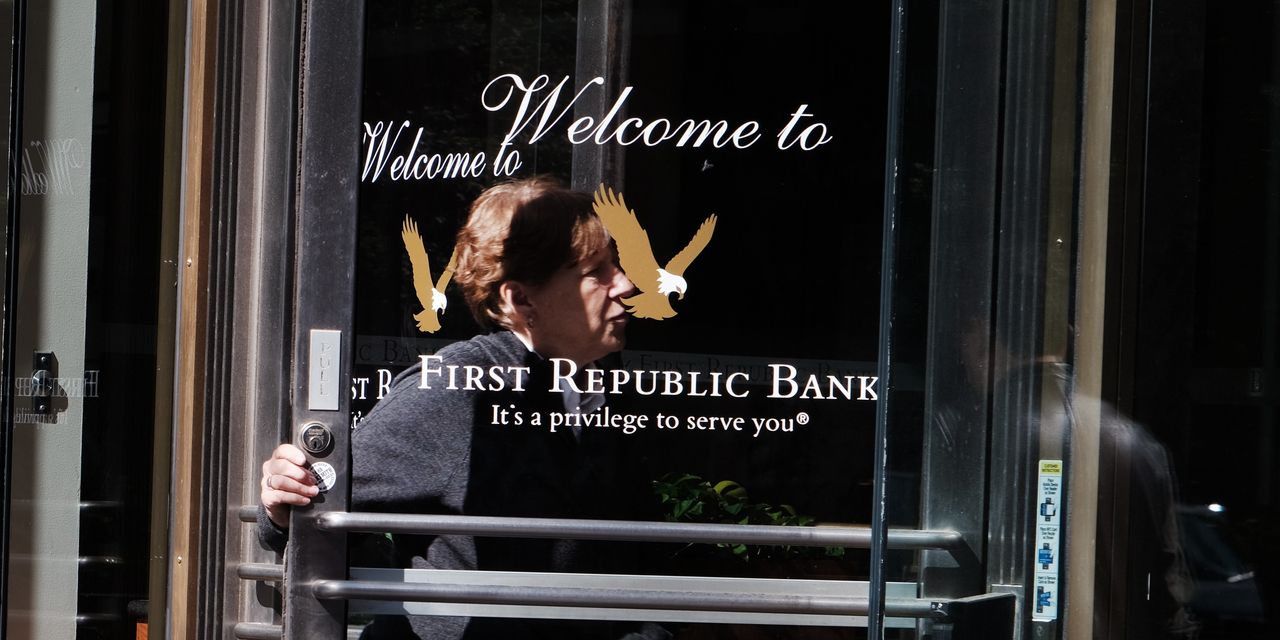The costs of powerful backstops for banks are in the spotlight after First Republic Bank’s failure and sale to JPMorgan Chase pushed the tally of recent assets seized by regulators from three banks above the 2008 crisis peak.
The Federal Reserve created a new Bank Term Funding Program in early March, with the aim of limiting contagion risks after the collapse of California’s Silicon Valley Bank and New York’s Signature Bank.
The hitch is that First Republic still failed after the program’s rollout, and tapping the facility also means shelling out a lot more for Fed help than in the recent past.
“It’s generous, but expensive,” said Mimi Duff, a senior client adviser at GenTrust and a former Wall Street rates specialist who had roles at Goldman Sachs and Barclays.
Rates for the new Fed liquidity facility were last at 5% for one-year loans. COVID emergency facilities rolled out in 2020 charged closer to 1.5%, while many government-backed bonds created in 2020 and 2021 also carry coupons of 3% or less.
“It’s a difficult choice to make,” Duff said of a bank either needing to tap government liquidity facilities, raising interest on deposits above the prevailing rate of below 1% to keep clients’ cash, or selling older Treasury bonds and securities at marked-down prices.
“Either way, the bank’s cost of funding is going up,” Duff said. She also worries banks that aren’t deemed “too big to fail” will remain at risk and will be a drag on the economy until underlying problems are resolved.
“The key takeaway going forward is that banks are no longer going to be in the business of free money,” she said. “They have to pass on the higher rates on new loans, and that’s going to be squeezing economic activity.”
Shares of regional banks remained under pressure, with the SPDR S&P Regional Banking ETF
KRE,
off 35% on the year through Wednesday, while shares of Western Alliance Bancorp
WAL,
were down 50% for the same stretch and those of PacWest Bancorp
PACW,
were 72% lower since January, according to FactSet.
Also see: PacWest stock plummets after report of potential sale
Bank asset seizures top 2008 peak
Use of the new Fed emergency liquidity program by banks has pulled back from peak levels since March, a sign that stress has been abating.
But in a worrying sign, the dollar amount of bank assets seized by regulators from three banks in 2023 has surpassed the prior 2008 peak of about $500 billion (see chart).
“The worst of the crisis isn’t over,” said Sandeep Rao, senior researcher at Leverage Shares, in a phone interview. “Commercial real-estate loans on bank balance sheets aren’t going to look very good,” he said, pointing to office occupancy rates that have only been around 50%.
He called long-dated government debt created in the past decade “everybody’s problem” but noted that is particularly a problem for regional banks that have been forced to compete on things like home loans with “too big to fail” globally systemic banks in the past decade.
“It’s sort of like having kids,” Rao said. “Either they all are special or none are special.”
In addition to the new Fed facility, banks also have access to the nearly century-old Federal Home Loan Bank system, a “bank to banks” that’s been providing billions of dollars worth of discounted loans to banks reeling from rate shocks and lost deposits.
Outside of times of stress, the Federal Home Loan Bank system’s key focus has been fostering U.S. mortgage-lending activity. Both that and the Bank Term Funding Program allow Treasurys and agency mortgage bonds to be pledged as collateral in exchange for discounted loans, but only the new Fed program lets banks pledge collateral at par, or 100 cents on the dollar, even if the open market would deem them to be worth less than that.
Researchers at Stanford University estimated in March that banks could face $2.2 trillion in losses from “safe” but rate-sensitive securities, like the ones sold by Silicon Valley Bank that helped hasten its collapse. Whalen Global Advisors this week estimated that huge swings in asset prices have left banks, bond investors and insurance companies with an estimated $5 trillion in losses.
The Federal Reserve raised rates another 25 basis points on Wednesday, taking its policy rate to a 5%-5.25% range to help quell inflation while also signaling that a pause could be warranted.
Read: Fed hikes rates and revamps forward guidance in dovish direction
Meanwhile, to help gauge banking stress, investors will keep a close eye on activity at the Federal Home Loan Bank system, where BofA Global recently pegged daily growth in its debt at about $243 billion higher since March 1, before the collapse of Silicon Valley Bank.
“I feel like most folks are looking for some form of recession right now,” said Duff at GenTrust. “That’s our base case — a mild recession.” But she also thinks investors counting on Fed rate cuts later this year will be disappointed.
“We don’t think that’s going to happen,” she said, adding that the Fed’s aim of avoiding a resurgence of inflation like in the 1970s and ’80s likely means it will risk recession to get prices under control.
Related: Office property woes could be tip of iceberg if credit freezes up as $1 trillion debt bill comes due
Stocks closed lower in choppy trade after the Fed rate hike on Wednesday, with the Dow Jones Industrial Average
DJIA,
down 0.8%, the S&P 500 index
SPX,
off 0.7% and the Nasdaq Composite Index
COMP,
0.5% lower, according to FactSet.
Read the full article here













